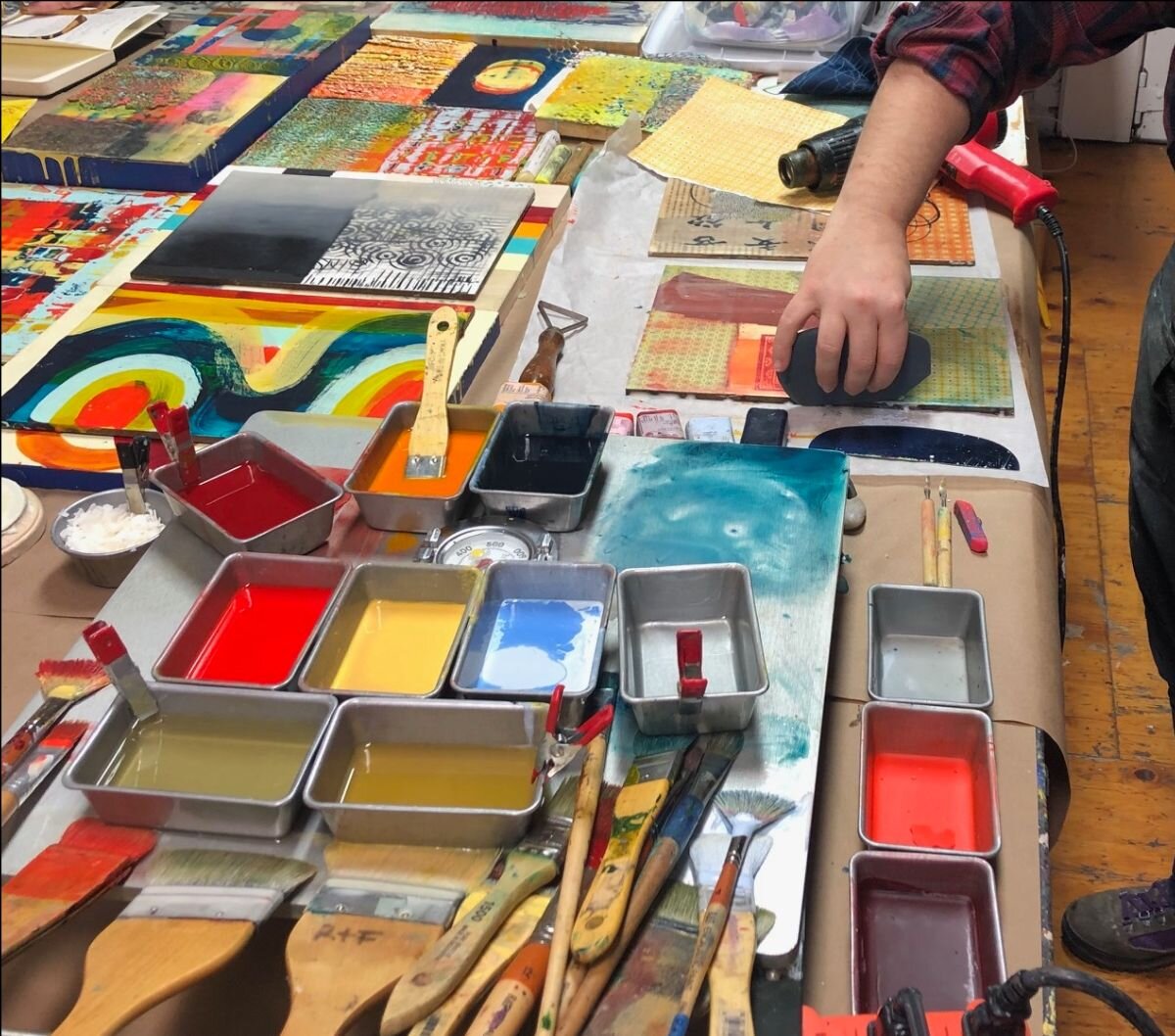Encaustic: Handy Tips & Tricks
Occasionally you make a discovery in the studio that changes the way you go about your process. Our "Handy Tricks & Tips" newsletter is designed to offer you "tips from the pros." We hope this shared knowledge can be a shortcut for some of the more pragmatic items in the studio, so you can get right to the most important part. Creating!
Kelly McGrath on using the palette for more than mixing and melting paint
Coating paper with wax: "Having a flat heated surface for working with encaustic can be beneficial for more than just mixing and melting paint. If you've ever tried coating paper with wax by dipping it into a vat, you know achieving a thin and even coat can be tricky. The paper can easily absorb a light amount of wax by sprinkling wax onto the heated palette's surface, allowing it to melt, and laying the paper over it to soak in the wax."
Finishing edges of panels: "The palette surface is great for finishing the edges of a painting. Whether working on a flat or cradled panel you can create an even flat or beveled edge along the finished side of a painting by simply rolling the edge of the surface across the hot palette. This is a good alternative to scraping, which can chip edges and will sometime resist finishing evenly."
Creating beveled edges on an R&F workshop sample panel.
Encaustic Monotype: "The palette surface serves as a tool to produce encaustic monotypes. Imagery can be composed right from a block of paint ‘drawn’ across the surface, and textured tools of all varieties can be used to create designs and patterns. To give you more control over the painting process, melt the wax just above the melting temperature."
Pamela Blum on wood cabinet scrapers
"Wood cabinet scrapers are excellent time savers. They are steel and longer than clay tools so cover larger areas when scraping encaustic surfaces. Scrapers range from flexible to very stiff. They come with a range of edges: straight, gently curved, and as a French curve. The French curves are particularly useful for scraping concave surfaces. The straight edges expedite scraping on flat and cylindrical surfaces.”
Check out our NEW Articles & Links page. We've gathered many of our blog posts and resources onto an easy reference page for you.



